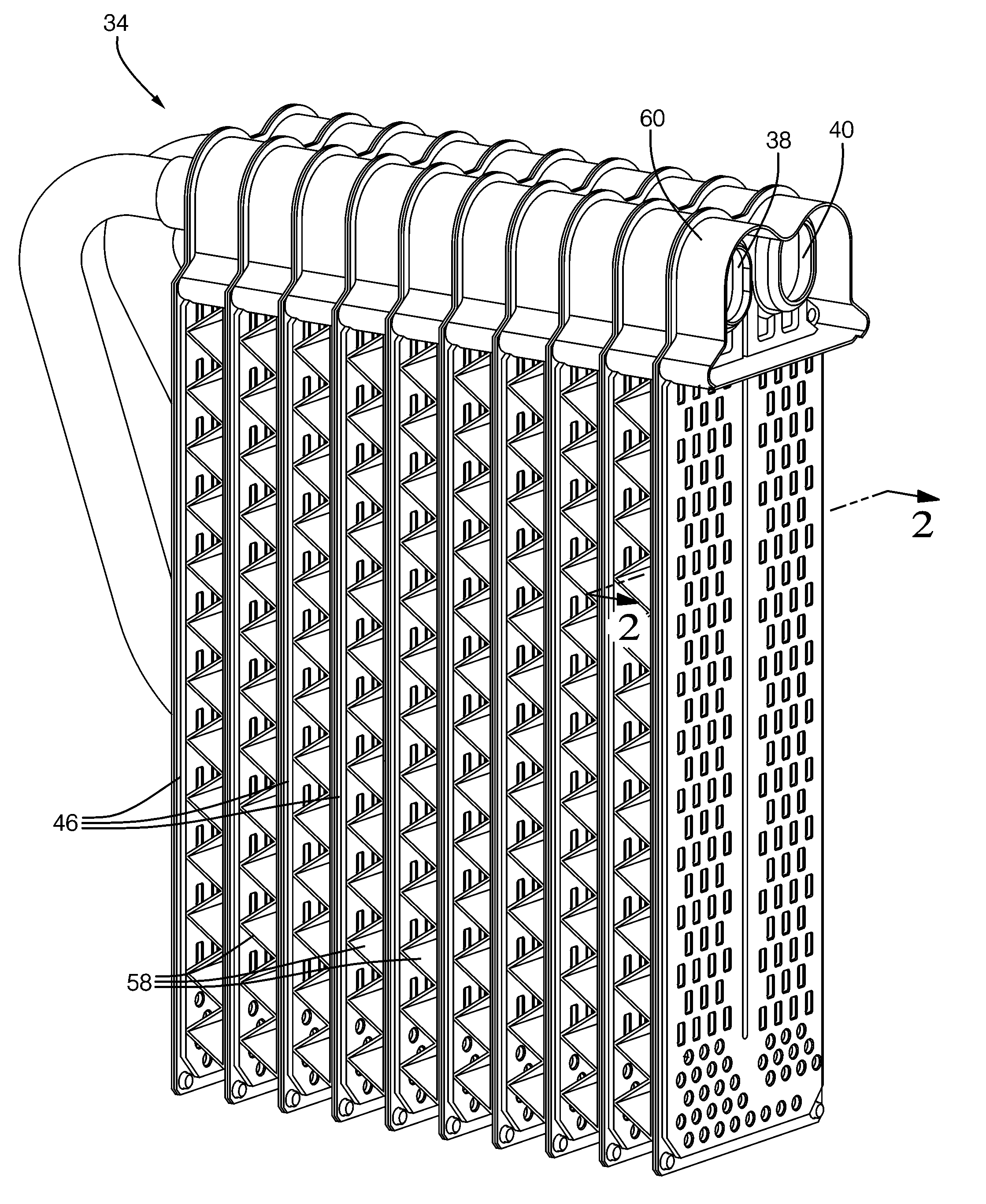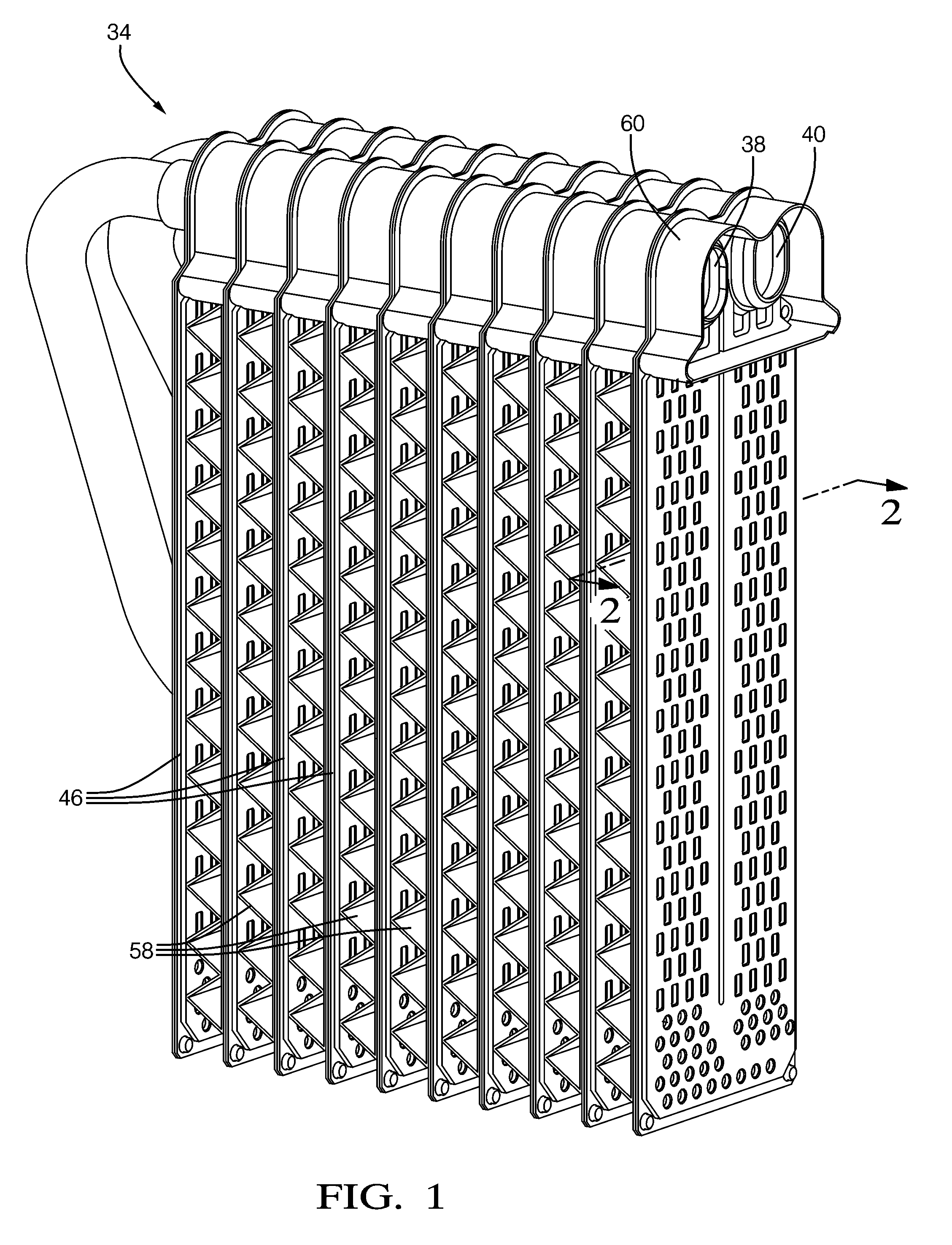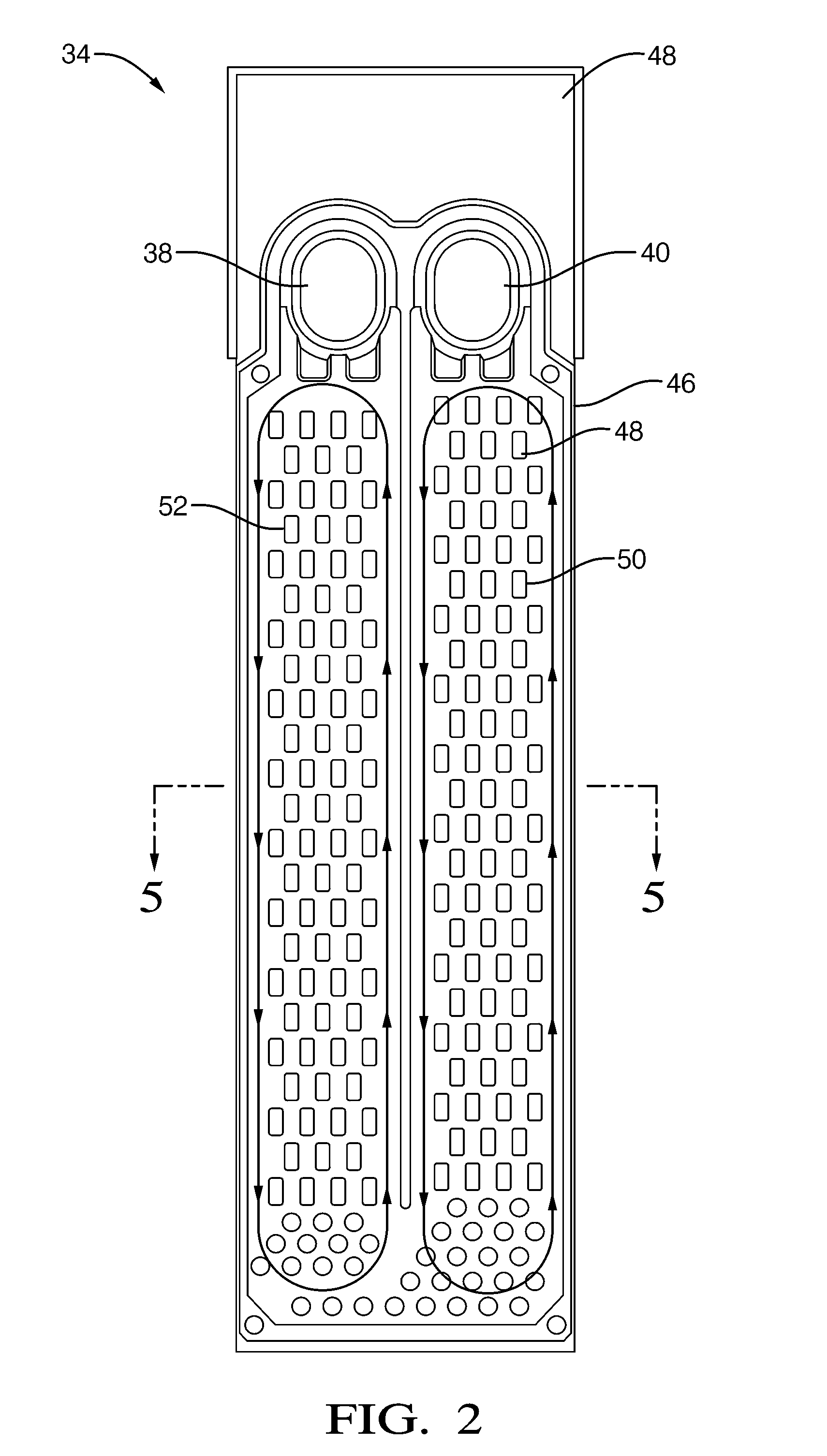Evaporator Phase Change Thermal Siphon
a technology of phase change and evaporator, which is applied in the direction of indirect heat exchangers, lighting and heating devices, domestic cooling devices, etc., to achieve the effect of less volumous and easy manufacturing
- Summary
- Abstract
- Description
- Claims
- Application Information
AI Technical Summary
Benefits of technology
Problems solved by technology
Method used
Image
Examples
Embodiment Construction
[0015]Referring to the Figures, wherein like numerals indicate corresponding parts throughout the several views, an air conditioning system 20 is generally shown in FIG. 3. In the exemplary embodiment, the air conditioning system 20 is shown in a vehicle having an engine 22, but the air conditioning system 20 could also be used to cool a building or any other structure. The vehicle of the exemplary embodiment has a first operating mode with the engine 22 of the vehicle running and a second operating mode with the engine 22 of the vehicle dormant. The second operating mode could be a number of different driving conditions, e.g. when the vehicle is coasting or temporarily stopped. The air conditioning system 20 is particularly effective when used in a hybrid-electric vehicle because the air conditioning system 20 of the exemplary embodiment continues to provide cooling for the cabin of the vehicle when the electric motor is driving the vehicle.
[0016]The air conditioning system 20 incl...
PUM
 Login to View More
Login to View More Abstract
Description
Claims
Application Information
 Login to View More
Login to View More - R&D
- Intellectual Property
- Life Sciences
- Materials
- Tech Scout
- Unparalleled Data Quality
- Higher Quality Content
- 60% Fewer Hallucinations
Browse by: Latest US Patents, China's latest patents, Technical Efficacy Thesaurus, Application Domain, Technology Topic, Popular Technical Reports.
© 2025 PatSnap. All rights reserved.Legal|Privacy policy|Modern Slavery Act Transparency Statement|Sitemap|About US| Contact US: help@patsnap.com



